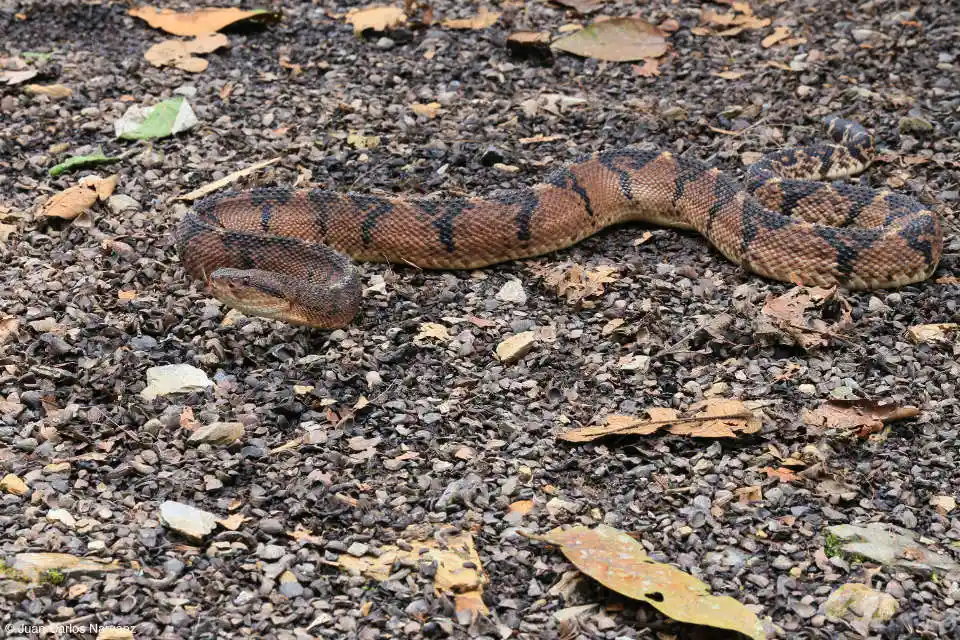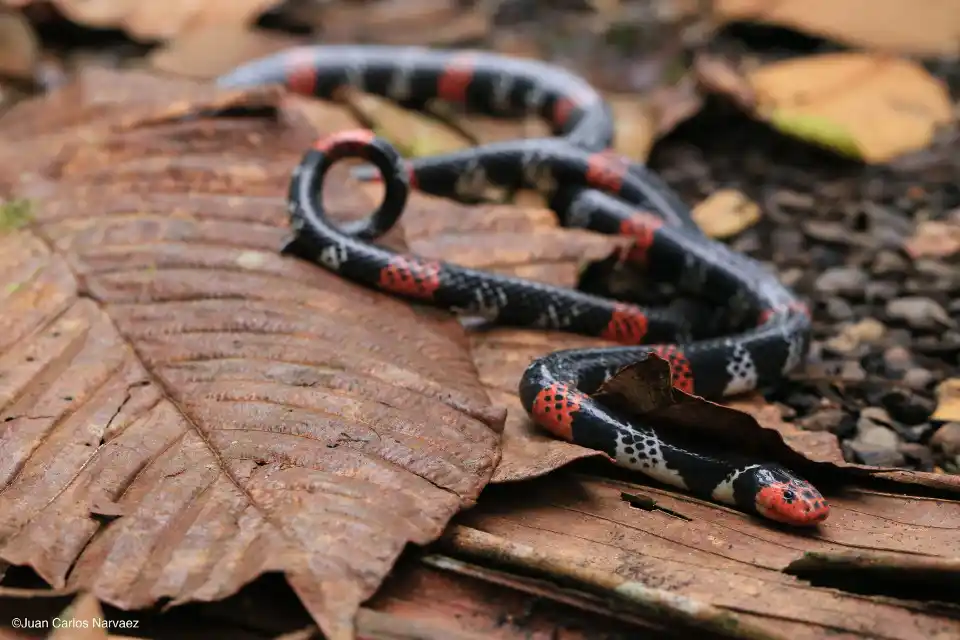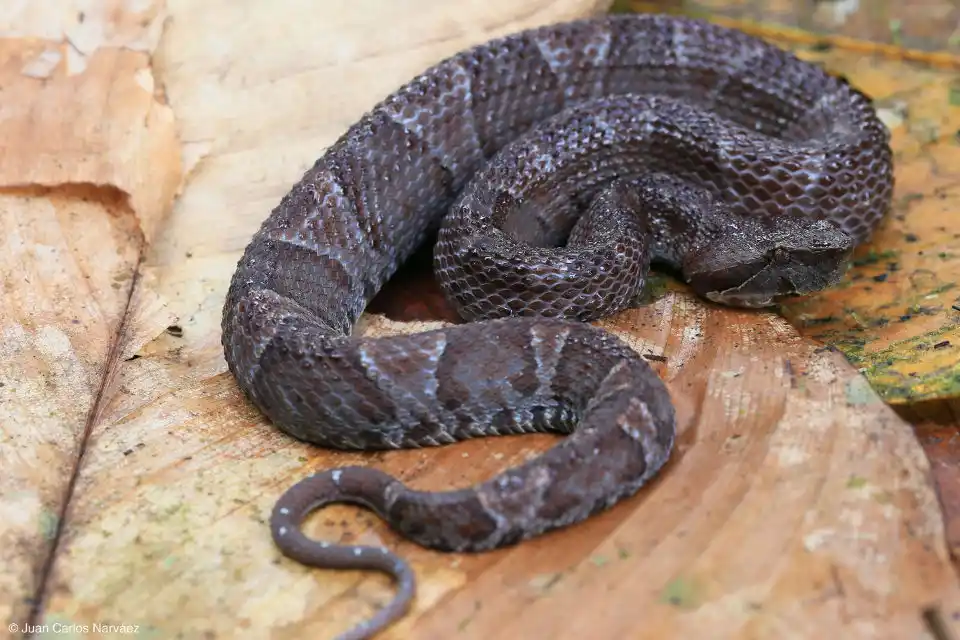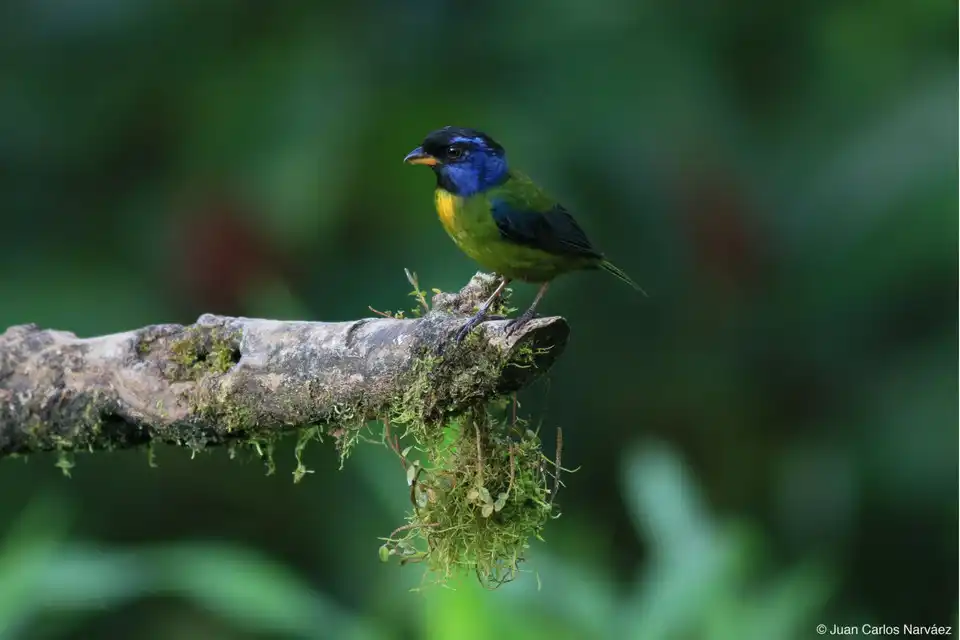Just a plain, brown bird
(House Wren: Troglodytes aedon)
By: Néstor Paladines
Encounters in the forest with the unassuming House Wren transform an ordinary day into a symphony of nature. Plain, brown, and with an effervescent call, this common backyard bird is found across the Western Hemisphere. Listen for its rush-and-jumble song in summer as it zips through shrubs and low tree branches, snatching insects. House Wrens in Mashpi live around the Life Center garden, and you can hear their energetic calls throughout the day, all as you enjoy the forest view from the deck.
Handling wild animals
By: Juan Carlos Narváez
Mashpi is a reserve rich in biodiversity. Here, one can go for a walk and come across an impressive number of different species, from beautiful birds, gentle mammals to even the most fearsome of beasts. In this wonderful environment, our research team encounters an entire universe to study.
A week ago, we ran into some of the most menacing snakes that inhabit the reserve: the Chocoan Bushmaster (Lachesis acrochorda), Anchor Coral Snake (Microrus ancoralis) and the Ecuadorian Toad-Head (Bothrocophia campelii).



These snakes play a vital role in the ecosystem. They hunt small forest vertebrates and help maintain a balance between populations. We were able to capture them temporarily to study their behavior and build on the photographic record we have of the species. Afterwards, we released them.

Encounters in the Forest: The Calls That Command Our Attention
In the cloud forest, every sound serves a purpose. Some animals emit a particular sound when there is a predator nearby, while other animals sing to woo their partners. A couple of days ago, while walking back from the Hummingbird Garden, an alarming noise stopped us in our tracks. It was made by two Moss-Backed Tanagers (Banqsia edwarsi).
When these birds feel threatened due to the presence of a predator, they emit a piercing alert call.

Upon closer observation, we noticed that there was another species producing a shrill sound among the Tanagers. It was an Andean pygmy owl (Glaucidium jardinii), a species of diurnal owl that feeds on insects and small birds. While owls are generally known as birds with special adaptations to hunt in the dark, these little owls are proof that there are also diurnal hunters among owl species.
Mutualism at its best
Zeledon’s Antbird (Hafferia zeledoni)
By: Néstor Paladines
Ants are known for their tendency to take on anything that stands in their path.
When millions of army ants swarm through the forest, they consume every insect, spider and lizard they come across. Naturally, any animal that hears the ants coming (and they’re very loud) runs the other way.
To capitalize on this, flocks of antbirds will track the army ants as they travel through the forest, prey on insects and other small animals trying to escape, and feed on whatever is left after the ants come through.
Antbirds and army ants enjoy a mutualistic relationship: antbirds benefit from the army ants, but the army ants neither benefit nor are harmed by the ant birds.




